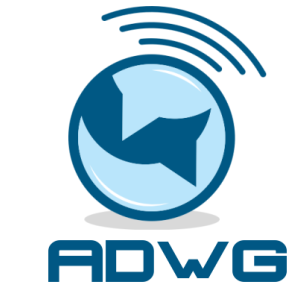Effective communication is essential for the success of any team or business. However, it’s not always easy to know where to start or how to ensure that everyone is on the same page. In this article, we’ll explore how to create a communications plan for your team, including tips on strategy, tools, and implementation.
Understanding the importance of a Communications Plan
Developing a successful communications plan is essential for any organization that wants to engage with its stakeholders and build an effective community. A communications plan is a roadmap to guide an organization’s messaging and strategy towards achieving its individual or organizational goals. It outlines the goals, target audience, strategy, and tactics to be used to achieve the desired results.
What is a Communications Plan?
A communications plan is a comprehensive document that outlines the messaging, goals, and strategies for an organization to engage its stakeholders. It’s important for organizations to have a plan in place so that they can anticipate potential challenges, create strategies to address them, and measure their impact. The plan should also consider the various communication channels available and determine which will be the most effective for reaching the desired audience.
Setting Clear and Measurable Goals
The first step in creating an effective communications plan is to set clear and measurable goals. These goals should be specific, achievable, and time-bound. It’s also important to identify the target audience and determine the best way to reach them. Examples of goals include increasing the organization’s visibility, creating greater awareness of its services, and raising funds to support its mission.
Choosing the Right Communication Tools
Once the goals and target audience have been identified, the next step is to determine which communication tools will be the most effective for achieving the desired results. It’s important to consider the various channels available and the pros and cons of each. Some of the most popular communication tools include:
- – Social media: Facebook, Twitter, Instagram, YouTube, etc.
- – Websites and blogs: Website design, content creation, etc.
- – Email: Newsletters, announcements, etc.
- -Print materials: Brochures, newsletters, etc.
- Events: Conferences, seminars, etc.
Choosing the right communication tools is essential for any organization that wants to reach its stakeholders and achieve its goals. It’s important to consider the various channels available and the pros and cons of each to ensure that the organization’s message reaches the right audience and achieves the desired results.
Crafting your communication strategy
The communication strategy is the foundation of any successful marketing campaign. It outlines how you will communicate your message to your target audience and ensure that it reaches them. Crafting an effective communication strategy requires careful thought and planning.
The first step is to define your target audience. Who are you trying to reach? Knowing who you’re trying to reach will help you determine the most effective channels to use to reach them. Consider factors such as age, gender, location, lifestyle and interests to narrow down your target audience.
Once you’ve narrowed down who you’re trying to reach, you can begin to plan your communication strategy.
Here are a few tips to consider when crafting your strategy:
- Establish your message: What do you want to communicate to your target audience? Make sure your message is clear, concise and consistent.
- Identify your channels: Consider which channels will be the most effective for reaching your target audience. Popular options include email, social media, print materials and online advertising.
- Define your objectives: What do you want to achieve with your communication strategy? Is it to increase web traffic, generate leads or build brand awareness?
- Set your timeline: When do you want your message to be released and how often will you be communicating with your target audience?
- Measure success: Create a plan for tracking the success of your communication strategy.
By taking the time to craft an effective communication strategy, you can ensure that your message reaches your target audience in the most effective way possible.
Why is consistency and accountability important in team communication?
Consistency and accountability are important for team communication for a number of reasons. First and foremost, when communication is consistent, teams can remain on the same page and work towards the same goals more efficiently. This is because when everyone is speaking the same language and sharing the same understanding of the task at hand, it allows for less confusion and more efficient workflows. Additionally, having clear and consistent communication helps to reduce the amount of miscommunication and misunderstanding within teams, which can lead to wasted time and resources.
When accountability is present, it ensures that team members are held responsible for their contributions to the team. This means that each team member knows what is expected of them and will be held accountable for their performance. This creates a sense of ownership and responsibility for team members to take responsibility for their own tasks, which can encourage better communication and collaboration within the team.
In terms of the future of communication and collaboration in the workplace, there are several trends that are likely to continue and become more prominent. Firstly, the use of digital communication tools like Slack, Microsoft Teams, and Zoom will continue to become increasingly popular as they make it easier to stay connected and collaborate. Secondly, remote work will become even more prevalent as companies look to increase their global reach. Finally, virtual team meetings are likely to become the norm, as they allow for teams to connect and collaborate regardless of their geographical location.
Overall, consistency and accountability are two important factors when it comes to team communication. By having consistent communication, teams can remain on the same page and work towards the same goals more efficiently. Additionally, accountability ensures that team members are held responsible for their contributions to the team. As for the future of communication and collaboration in the workplace, digital communication tools, remote work, and virtual team meetings will likely become the norm.

